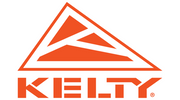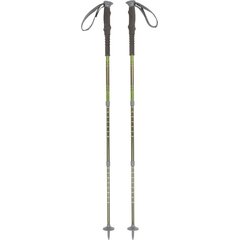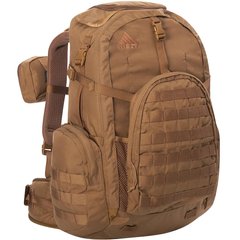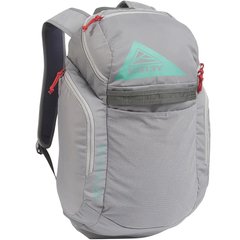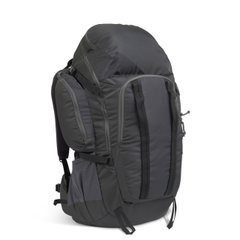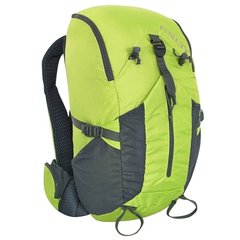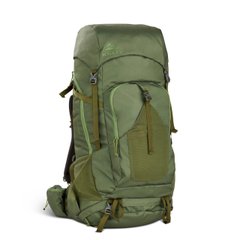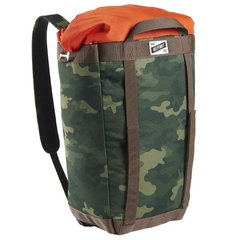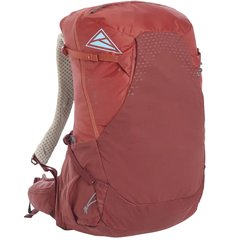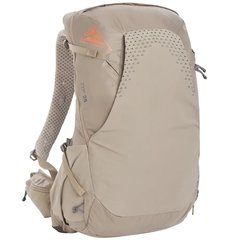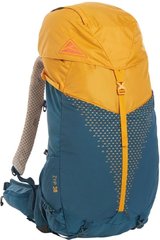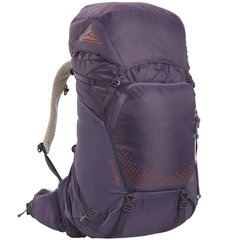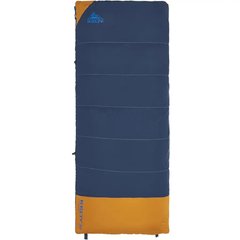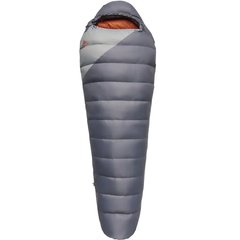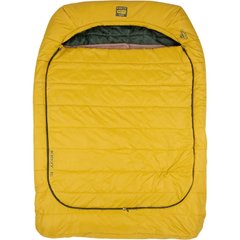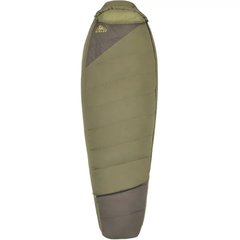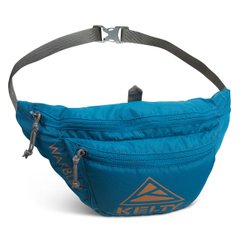|
Quantity
|
Out of stock
|
||
|
|
|||
Kelty backpacks, tents, and sleeping bags are as much a part of American culture as Harley-Davidson, McDonalds, and more.
This iconic American brand, originally from Boulder, Colorado, the heart of the Rocky Mountains, has been creating adventure gear since 1952 and has been steadily improving.
The KELTY range includes tents, sleeping bags, hiking and sports backpacks, furniture and camping accessories.
The main idea of the manufacturer is to create an innovative product that is easy to use, comfortable, reliable and durable at the same time.
The company was founded by Asher "Dick" Kelty, who was one of the first to create and sell the Kelty travel backpack worldwide.
He is considered the inventor of the Kelty backpack of the same name, which was based on an aluminium frame.
The idea of creating such a backpack arose in 1951, during a hike in the Sierra Nevada mountains. He noticed that a friend of his had inserted the wooden supports of his backpack into his trouser pockets, thus transferring a significant part of the load to his hips, allowing him to keep his back straight and move with great comfort. After returning home, Kelty began to create a backpack made of nylon and lightweight aluminium tubing, adding waist straps with padded shoulder straps to distribute the bulk of the weight on his legs.
Very soon, all his hiking friends started asking him to make similar backpacks for them, and Kelty decided to produce them for sale.
The company has been operating for more than 70 years - since 1952!
Its history began with garage production. Dick personally designed and welded the frames, and his wife Nena cut and sewed the bags, belts, and straps for them.
After the Second World War, there was a lot of unclaimed materials in the warehouses that were sold to the civilian market: thin parachute and durable ballistic nylon, aluminium buckles, extra strong threads, and more.
Before and during the war, Dick Kelty worked at the Lockheed aircraft factory, where he became acquainted with aluminium, which was not yet widely used in civilian life.
Most likely, his knowledge of the properties of this metal prompted him to make the frames of his backpacks from it.
The hiking backpack industry in the US in the early 1950s simply didn't exist yet, with hikers using either self-made or army equipment, so Kelty's backpacks were a breakthrough, and every element of them was a serious innovation.
Dick manually bent tubes and plates of aircraft aluminium to make them anatomically comfortable, his wife Nena padded the soft shoulder straps and sewed waterproof nylon with coarse threads.
The result was a hiking backpack that had no analogues at the time, either in the US or in the world.
At the time, the Kelty backpack also cost a lot - as much as $24, which is equivalent to $255 today! That is, at the level of prices of modern medium-sized tourist backpacks from among high-end models.
Sales of backpacks were increasing every year, and in 1956, the Kelty family completely switched to their production by selling their carpentry workshop.
Later, sales, assortment, and reputation of Kelty backpacks only grew, thanks to the tourist boom of the 1960s and the company's participation in cool projects.
In 1963, their backpacks were used by Jim Whittaker's team during the first ascent of Mount Everest by the American team along the previously untrodden western edge.
In 1966, a National Geographic Society expedition went to Antarctica with Kelty backpacks.
In 1975, an American team climbed K2 for the first time with them.
It is not surprising that the Kelty brand has acquired a cult status for the US hikers and climbers. This is partly why the company still produces frame models of backpacks "as if from the 1960s".
The Kelty business did not remain a completely family-run business for long: in 1971, Dick sold his business to a large company, but he worked as a manager for another 6 years.
The large resources made it possible to significantly expand the range of products, and now, in addition to backpacks, Kelty began to produce travel mats, sleeping bags, ponchos and even membrane clothing.
The new management was quite astute and did not let the brand go downhill.
Many well-known equipment designers in the US had worked on Kelty gear in the 1970s and 1980s, bringing fresh ideas to the table. This allowed the brand to maintain its high position in the American outdoor equipment market. And it is very difficult to do so, because the competition there is fierce. Past merits do not play a decisive role, the choice in stores is huge, and outdoor companies need to make a lot of effort not to get lost among competitors.
And there was such a risk in Kelty's history - at the turn of the 1990s and 2000s, they did not join the ultralight equipment race, continuing to create reliable classic hiking equipment, which, however, quickly became obsolete against the background of advanced competitors. Perhaps, Kelty decided not to catch up with the running train, but instead to occupy an unusual and interesting niche.
We are talking about new wave camping equipment.
The traditional approach to camping involves recreating home comfort in nature: huge tents, lush, wide sleeping bags, cots, large gas stoves, and of course a car to transport it all.
Kelty argues that camping should not be limited to camping around the car.
That it's much more interesting to go where transport cannot reach and have fun with friends in a beautiful natural location.
That camping is, first and foremost, a way for everyone to escape from the daily city routine through active recreation and communication with nature.
This approach is well suited to the format of simple weekend hikes that do not require much experience and good physical fitness.
These are short hiking and cycling routes, SUP-boarding and kayaking, followed by a long stopover in a beautiful place where you can sit by the fire, cook an unusual dish and play board games or ball with friends.
That's why today Kelty has become one of the main promoters of weekend hiking in the United States.
In their blog, the company's team gives advice on camping, equipment selection, camping with children and pets, and shares ideas on where and how to spend official holidays in the lap of nature.
Today, most Kelty models are made from a modern synthetic material - durable and reliable polyester.
To this day, Kelty remains one of the few companies that specialises in selling backpacks made of aluminium.
Kelty sleeping bags have also proved to be excellent, as they are made with both synthetic and natural fillings (goose down).
Kelty equipment is widely known all over the world and can be found in the assortment of the largest online outdoor equipment stores in the United States.





























